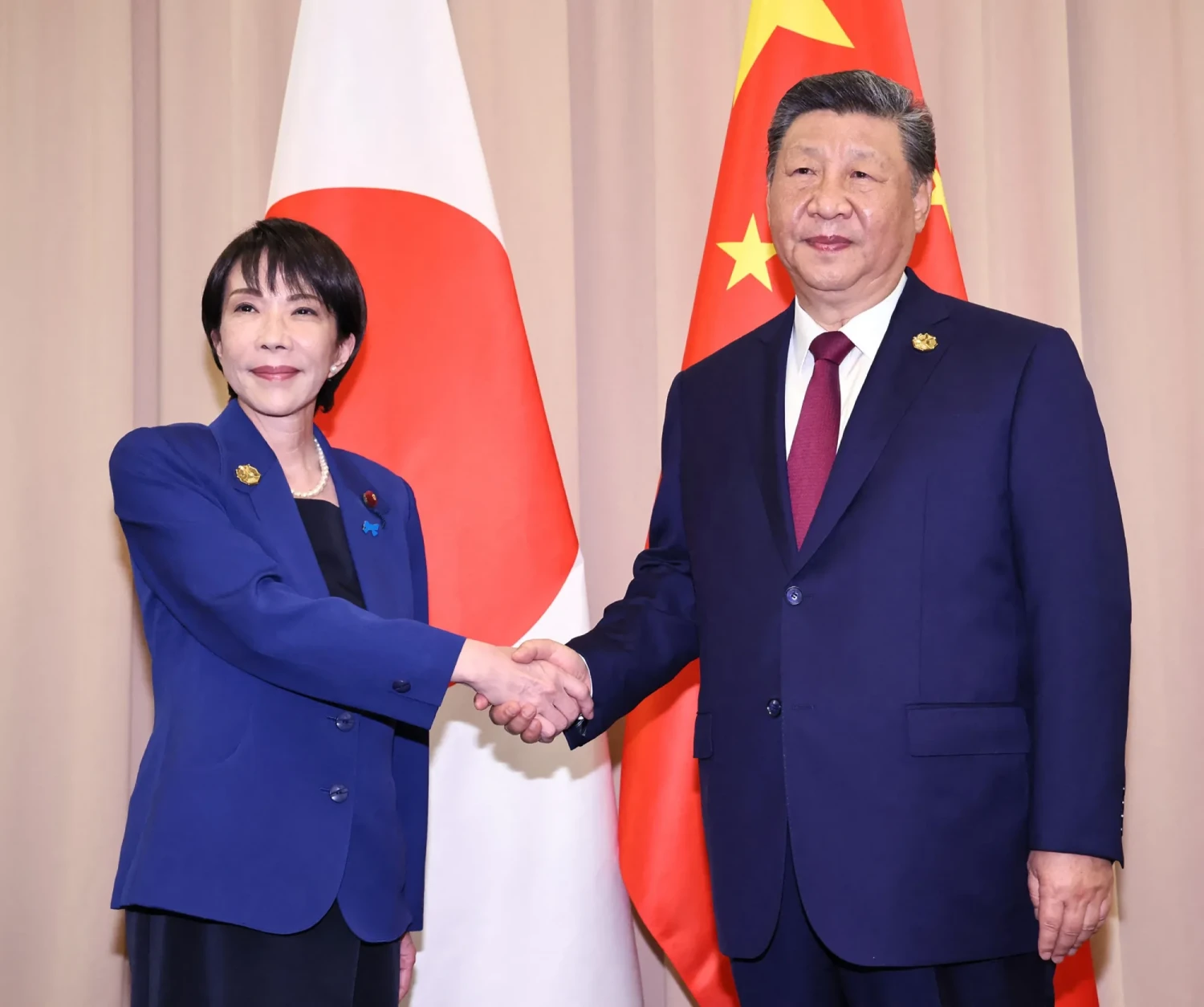
This article is more than
9 year oldJAPAN can’t have aircraft carriers. And just to be sure, it officially declared several of its latest warships must be called “helicopter destroyers” — even though to all intents and purposes they look like aircraft carriers.
They just don’t carry fixed-wing aircraft. Yet.
They carry helicopters.
It’s been a tenuous splitting of hairs ever since the Japanese Maritime Self-Defence Force introduced its new 25,000 ton flat-topped Izumo-class aviation ships to service in recent years.
Now Japan is reportedly considering abandoning the pretence.
And that could spark an international crisis.

Article 9 of the Japanese constitution dictates that Tokyo will “forever renounce war as a sovereign right of the nation ... land, sea, and air forces, as well as other war potential, will never be maintained ...”
Historically, this has been interpreted as allowing Japan military forces of a purely defensive character.
But a full-blown aircraft carrier is a mobile military base.
They are inherently offensive by nature.

CHINA ALARMED
Beijing has today warned Japan to “act prudently” after reports of Japan’s possible intention to buy the F-35B variant of the controversial stealth strike fighter.
It’s designed to operate off aircraft carriers. Particularly small ones.
Its mission is to support marines and soldiers establish a ‘beach head’ on hostile soil.
China’s diplomatic corps last night issued a statement that Tokyo should maintain peace “through action”.
China hopes Japan sticks to the Article 9 of its pacifist constitution and follows the path of peaceful development, says a FM spokesperson Tuesday in response to media reports that Japan is considering refitting a helicopter carrier for stealth fighters pic.twitter.com/R1VeVY9aEn
— People's Daily,China (@PDChina) December 26, 2017
Spokeswoman Hua Chunying overnight warned any such move to upgrade the Izumo helicopter carrier would draw the attention of its neighbours for “historical reasons”.
Japan infamously used its World War II carrier fleet to launch the surprise strike against Pearl Harbor which sank most of the United States Navy’s battleship fleet.
“We urge Japan to do more that may help enhance mutual trust and promote regional peace and stability,” Beijing’s spokeswoman said.
Earlier this year China launched its second aircraft carrier, and its first — Liaoning — embarked on several intensive war-game exercises.

ASIAN ARMS RACE
Beijing’s recent bold expansion into the South China Sea through the construction of illegal artificial islands in order to establish well equipped and heavily defended fortresses has dramatically raised tensions throughout Asia and the Pacific.
But it has also ramped-up its rhetoric over the disputed Senkaku island chain in the East China Sea, over which both it and Tokyo claim ownership.
Fishing fleets backed up by Chinese coast guard and naval vessels have repeatedly entered the waters around the islands in recent years, and more recently several flights by combat aircraft have passed nearby.
TAMING THE DRAGON: Can the US salvage its superpower status in Asia?
Tokyo has responded by repositioning naval patrol vessels, missile defence systems and fighter aircraft squadrons to the area — including the major joint-US military base island of Okinawa.
It has also been steadily rebuilding its defence forces.
Japanese Prime Minister Shinzo Abe this year approved a record $US46 billion defence budget for 2018. He justified it as a response to North Korea’s belligerent behaviour and China’s “growing military presence”.

IZUMO CARRIERS
At the centre of the growing diplomatic storm are Japan’s two new Izumo-class ships.
Whatever they’re chosen to be called, they’re currently capable of operating about 14 helicopters tasked with hunting down submarines.
Izumo and Kaga are the biggest ships Japan has built since World War II, measuring some 248m long and 38m wide. At 25,000 tons, its size is similar to that of the recently decommissioned British Invincible class of short takeoff and vertical landing (jump jet) carriers. It’s bigger than those operated by Spain and Italy.

Like Australia’s new Canberra-class landing helicopter dock (LHD) ships, Izumo can also carry troops — some 400 marines — and about 50 light vehicles. It does not carry landing craft to deploy them, however, instead relying upon embarking specialist heavy helicopters for the job.
Neither Izumo or Kaga have catapults — or a ski jump along the line of Australia’s Canberra class — intended to help fling fixed-wing aircraft like the F-35B into the air.
But both have large, clear decks capable — though they may need strengthening and heat-shielding to land, hold and launch ‘jump jets’. Additional modifications to provide such aircraft with the technical support they need are not likely to be dramatic.
A new air group combining the F-35B and V-22 tilt-rotor Osprey would certainly give these ships a real — if limited — strike capability.